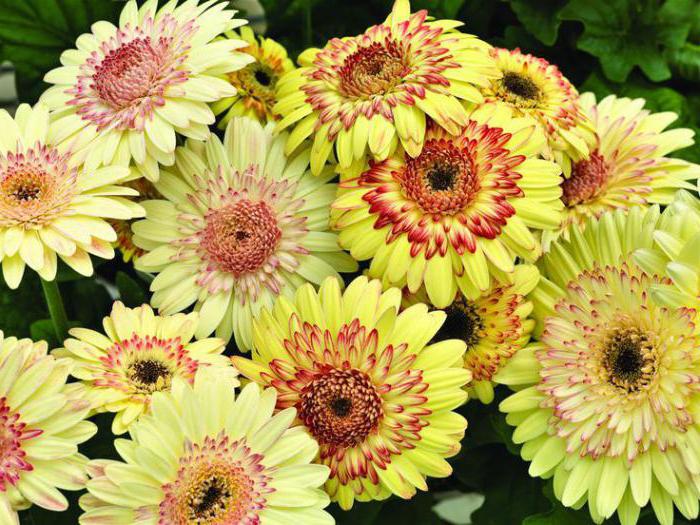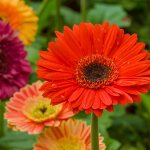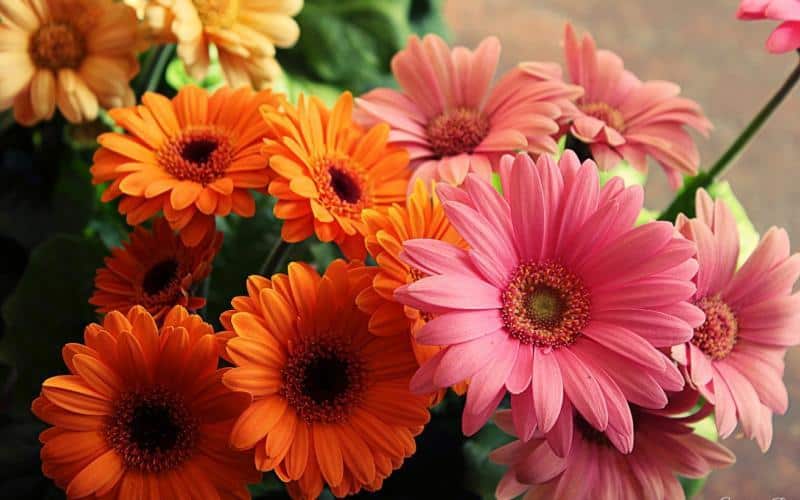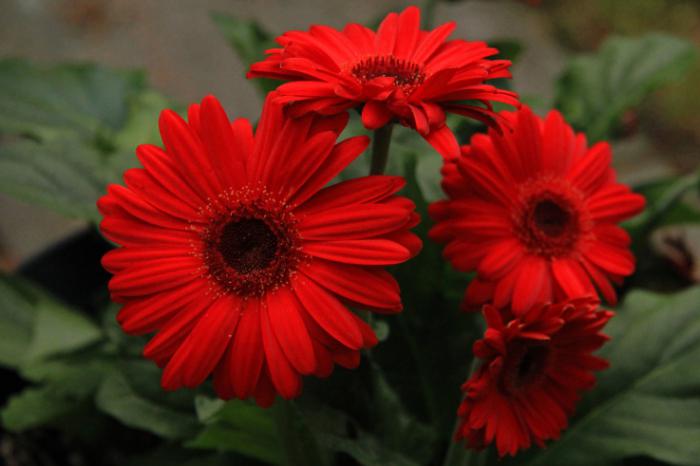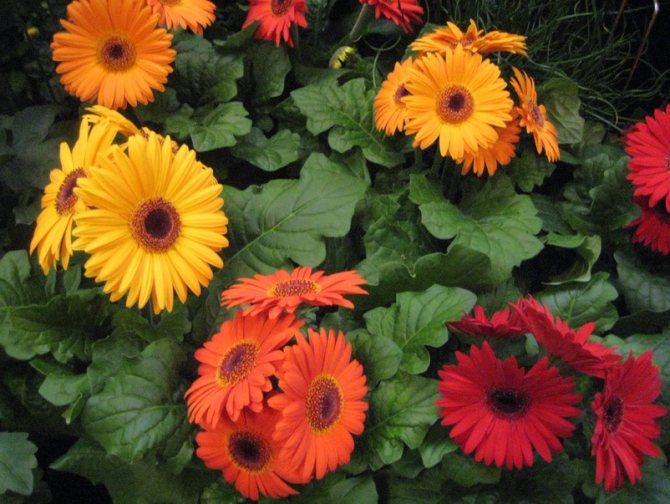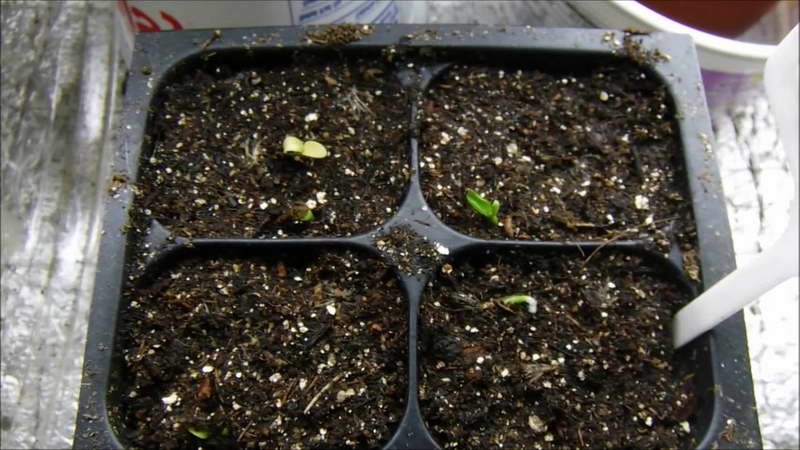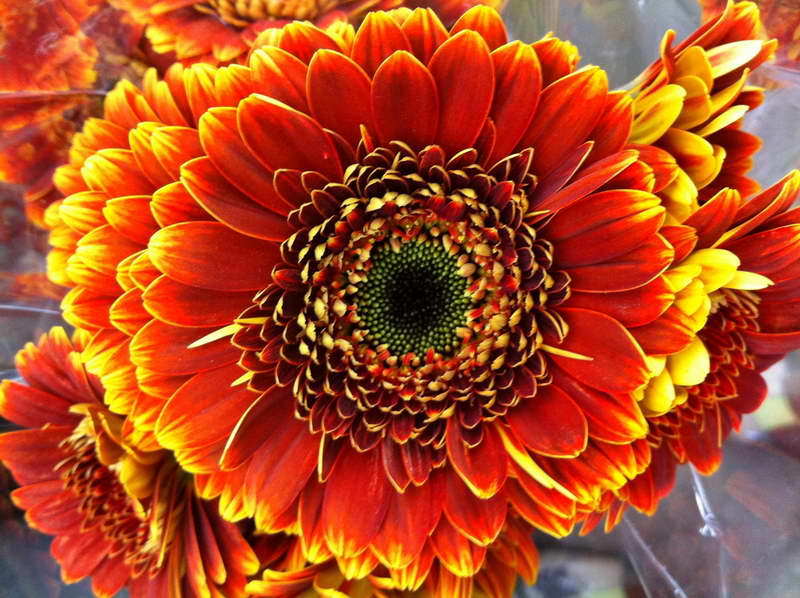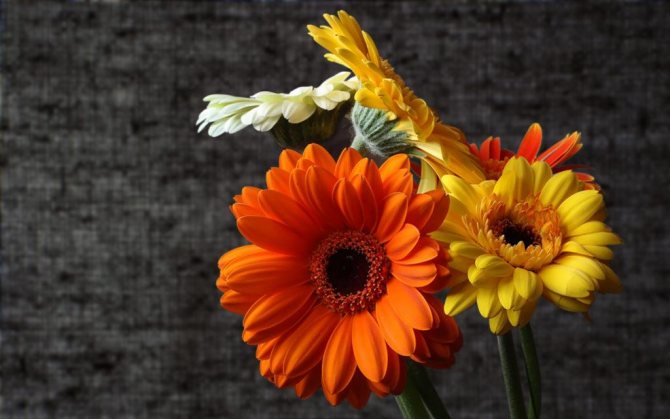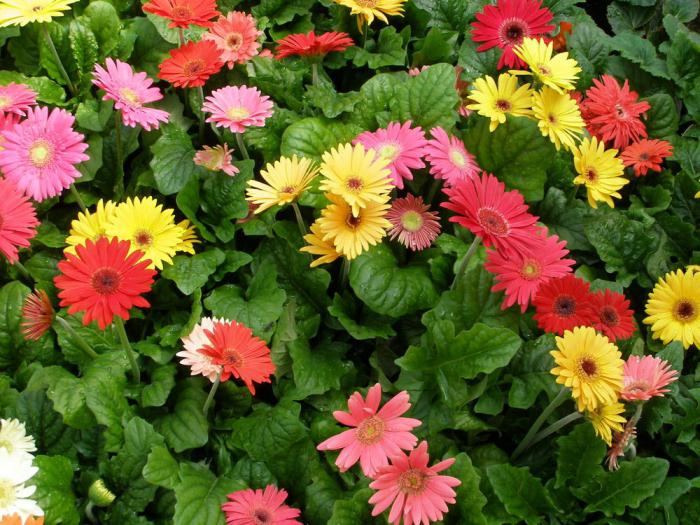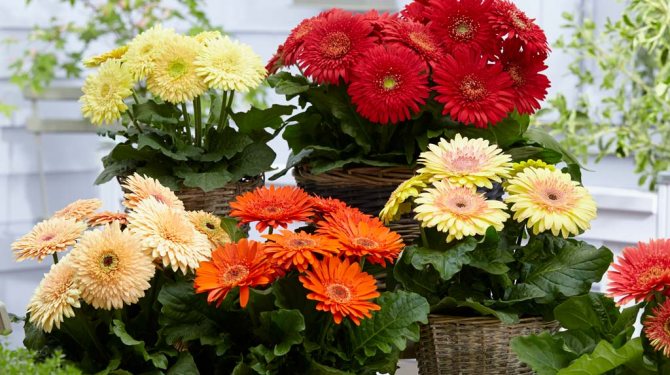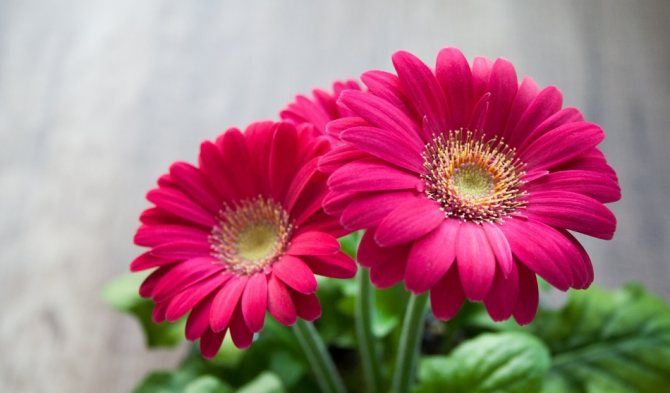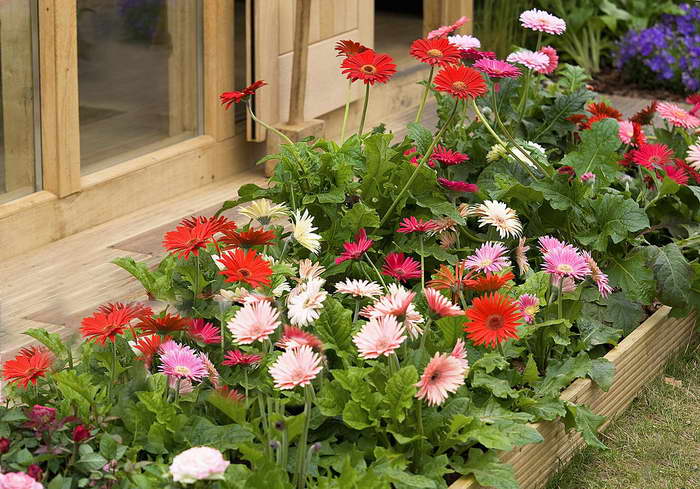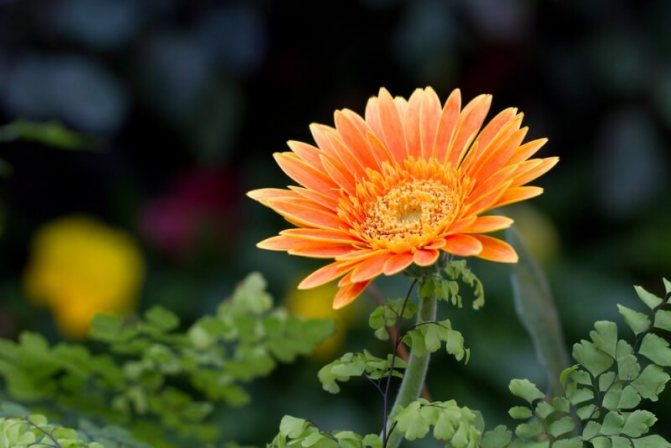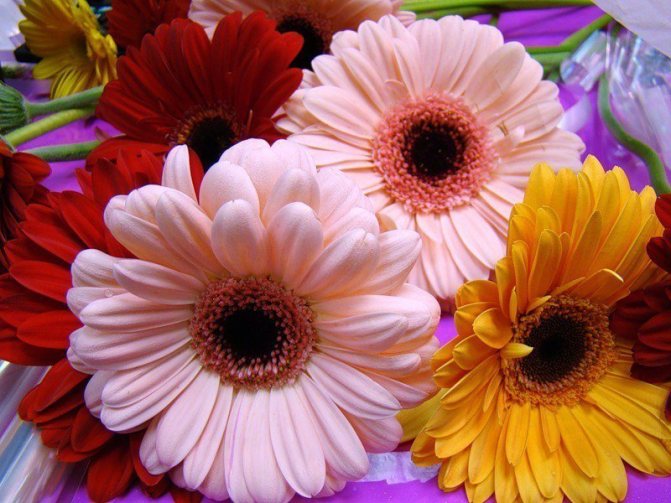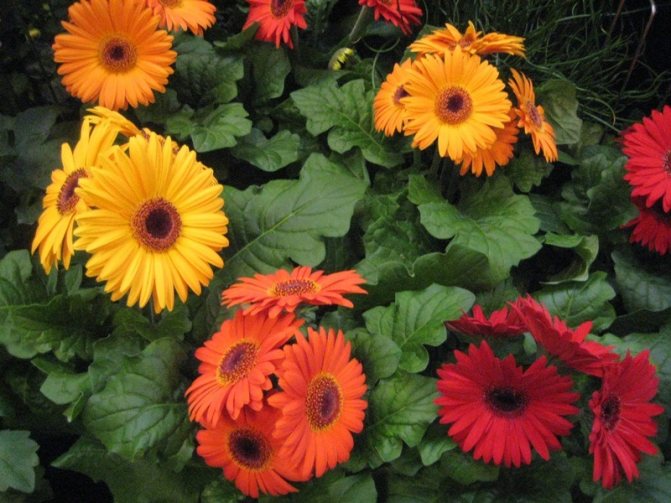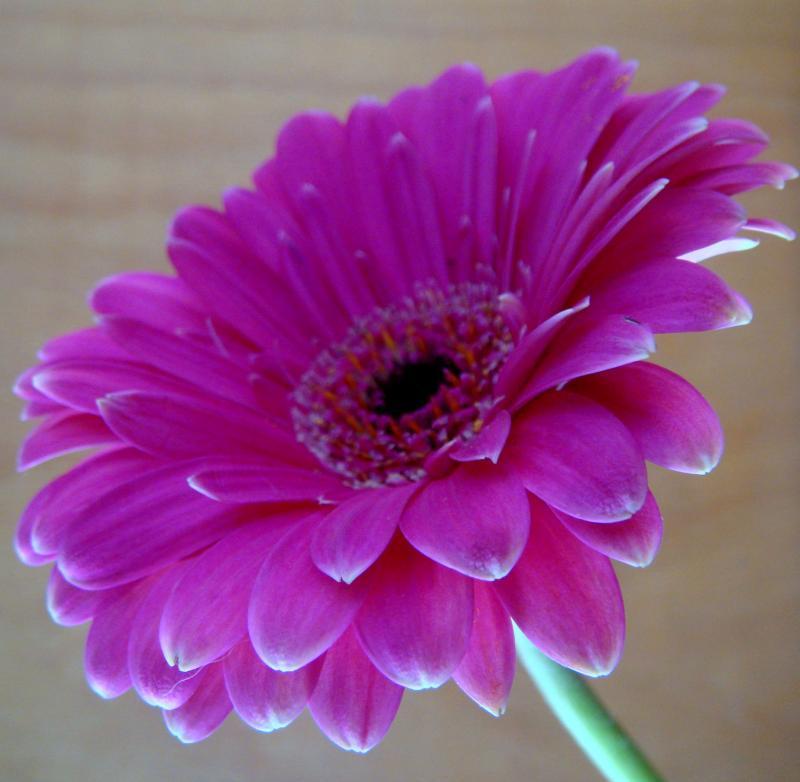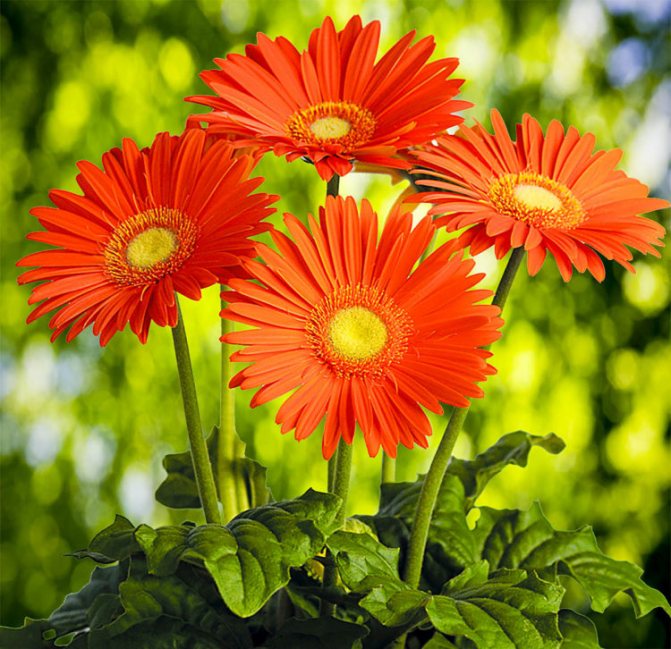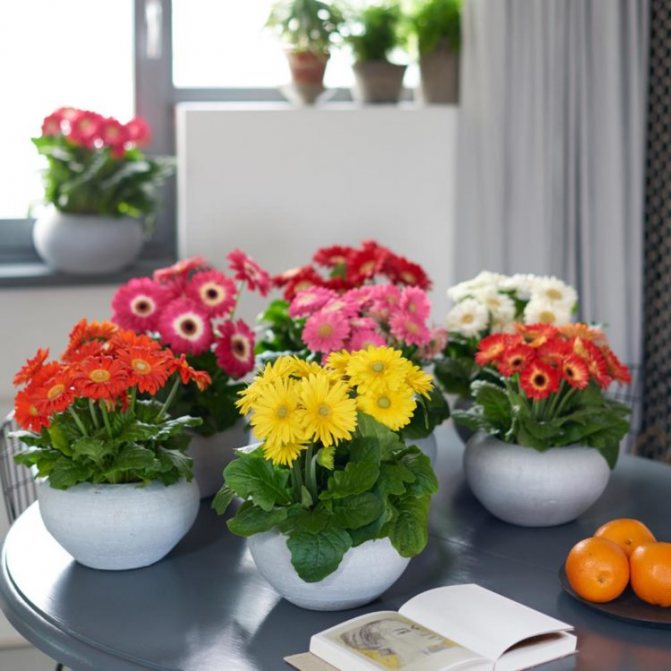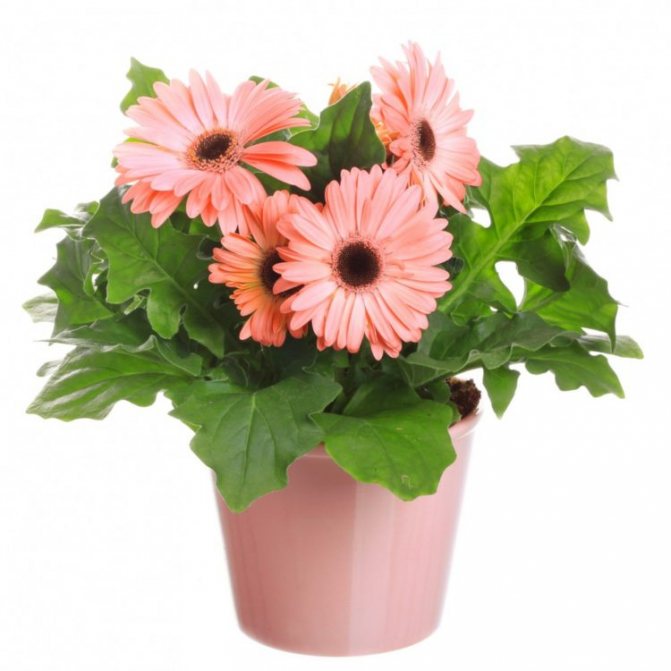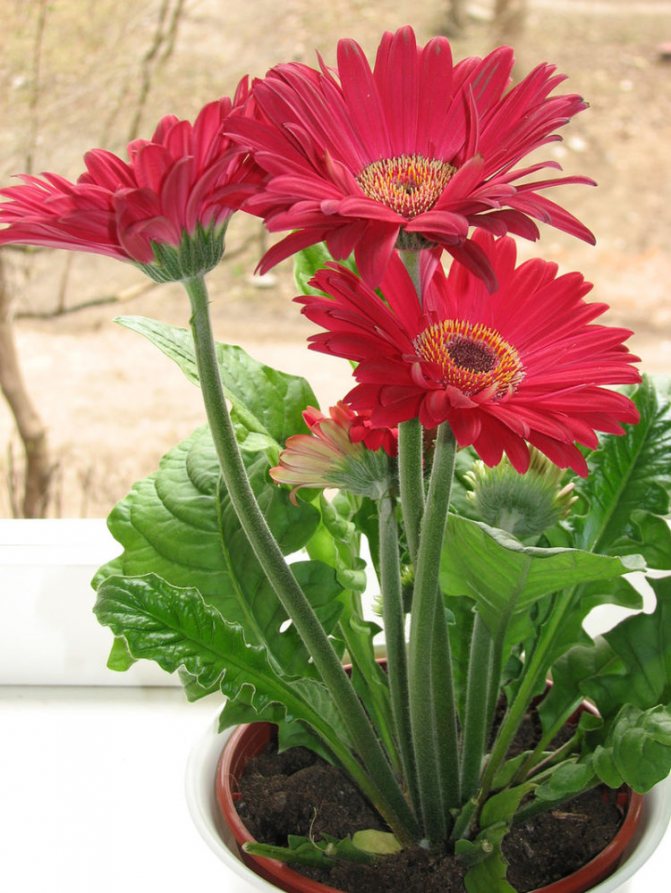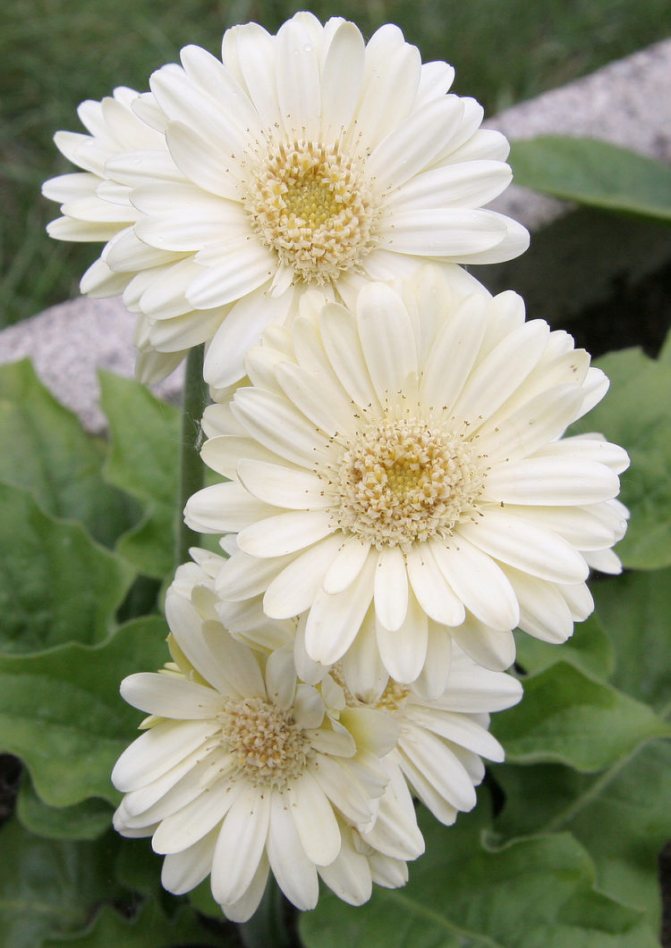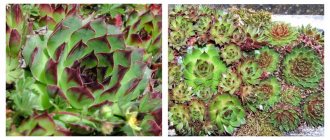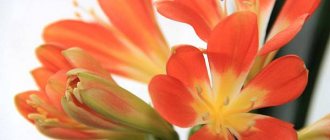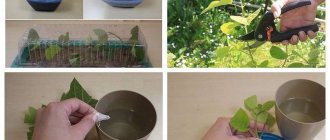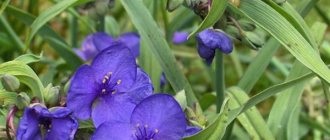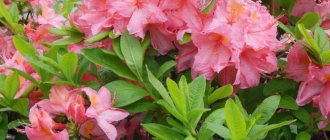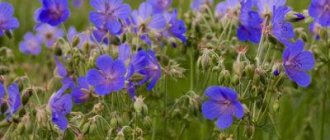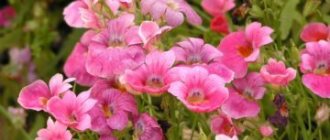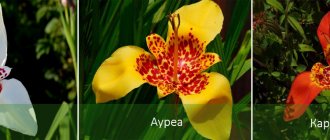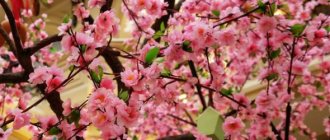Gerbera is a very popular outdoor flower. With its help, you can easily decorate a corner of a flower garden, flower bed or other landscape object in the garden. Experienced florists give recommendations with photos and videos, in which regions the planting will be successful, what are the difficulties of care, the peculiarities of growing and reproduction in garden soil, how to prevent diseases and pests.
Description of the flower
Originally from South Africa (for which it received the nickname - "African chamomile"), and some of its species are common in tropical Asia. Outwardly, the flower resembles a very large chamomile, but not the usual white-yellow color, but all kinds of bright colors, excluding blue. Nowadays, about eighty species of gerberas are known in the world and each of them is individual in its own way.
The flower is ideal for cutting, as well as garden decoration. Much less often, gerbera is grown as a houseplant, however, specially bred dwarf varieties are used for this, with less demanding growing conditions.
The leaves of African chamomile are elongated, pinnately dissected. Peduncles reach a height of up to sixty centimeters, and the flowers themselves are collected in inflorescences of a basket, like many other aster. Gerbera is appreciated not only for its fairly large demand in the flower market, but also for its unique property - to remain fresh when cut.
Gerberas bloom for three to four months. In a cut form, it can stand up to twenty days if a small amount of water is poured into a vase, thereby avoiding stem decay.
Description of the garden gerbera. Varieties of culture
One of the nicknames for this flower, which looks like a large chamomile, is the "South African sun". In Africa, gerbera is a perennial with several months of flowering. In the cool climates of Russia, it is grown as an annual or transplanted into a warm room for the winter. Tall varieties of gerbera are very popular among those who grow flowers for sale.
Attention! Plants from a garden plot can stand in a vase for up to three weeks. However, the flower shop most often sells gerberas from the nursery. On an industrial scale, the culture is looked after with the help of stimulants, which significantly shorten the life of the bouquet in the water.
Gerbera characteristics:
- stem height - up to 30 cm;
- leaves are thick, light green, collected in a socket under the peduncle;
- flowers - 12-15 cm in diameter, double or non-double;
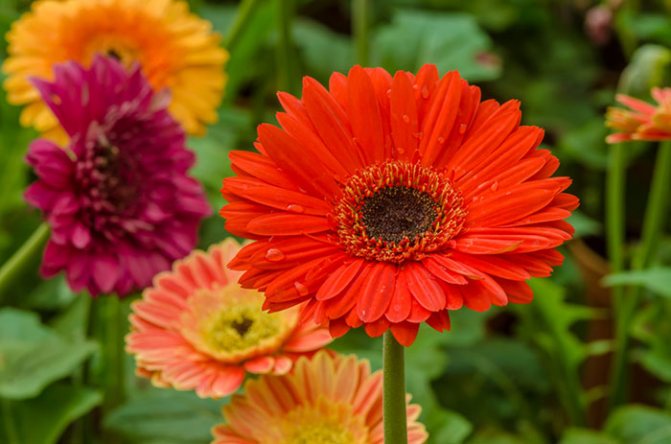
Gerbera flowers can be of different shades.
- color of flowers - various shades, except blue;
- the size of the petals depends on the variety, they are usually oval in shape;
- branched root system;
- after flowering, seed pods are formed on the plant, in each of which up to 500 seeds ripen.
Attention! A single gerbera flower blooms and withers within a month. The total flowering period of the culture is 3 months. During this period, one bush forms up to 20 buds.
There are about 80 species of gerberas in nature. There are a lot of tested and well-proven varieties: both for the southern and cool northern regions. In a garden, dwarf species take root well, which are the most unpretentious to care for.But if you want to raise tall, handsome beauties, try the Jamson varieties. Mars, Alcor, Jupiter, Iskra, Kalinka, Delios, Lancaster, Romeo, etc. are also planted in the middle lane.
Advice. When choosing, focus on the color of the flower, then on the width and the presence of a terry petal cover.
Planting, growing and breeding gerberas
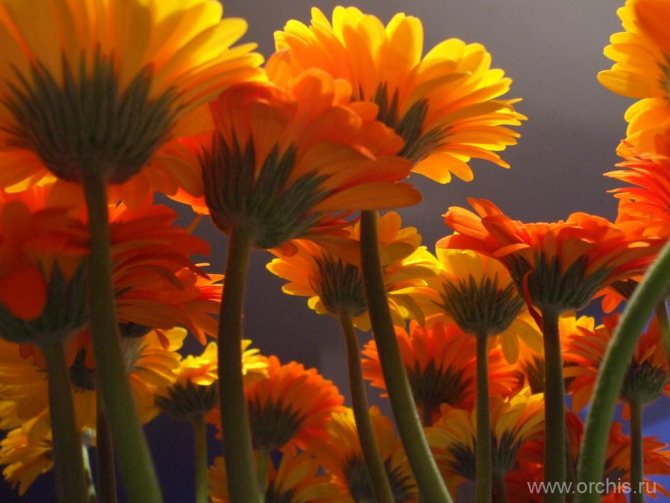

- There are three ways to propagate a plant:
- Reproduction using seeds. This method is most relevant in early spring. To plant a gerbera, you need to soak the seeds and spread them on the soil, after sprinkling it with sifted sand. The earth must be slightly moistened with water at room temperature. After that, the seeds are covered with foil or glass and placed in a warm place, away from direct sunlight. A week after planting, the seeds begin to germinate and with the appearance of the first leaves, the plant must be planted in special containers. When the sprouts get stronger and about four to five leaves appear, they can already be planted in a permanent place.
- Division of an adult bush. For this, it is better to choose three or four year old plants. This method is suitable for breeding especially valuable or rare gerberas. Thus, the maternal traits are retained, which are lost during seed cultivation. This method is more common for flower propagation at home. The division of the plant is carried out in early or mid-summer.
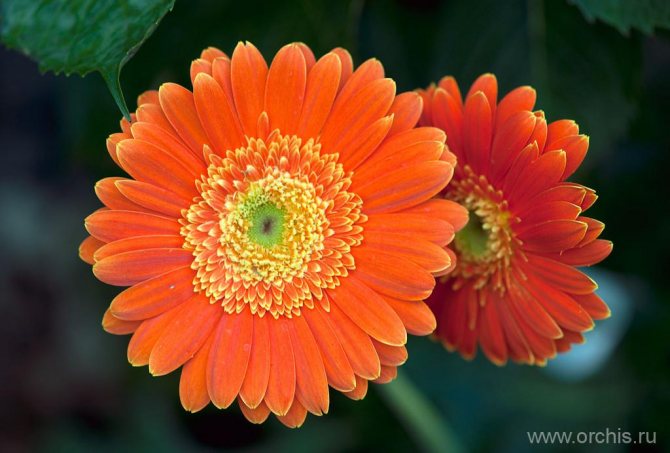

In the pot, remove the top old layer of earth, opening the upper part of the rhizome. An incision is made on it, which is sprinkled with a small amount of finely crushed charcoal. After - a new layer of earth is placed in the pot and placed in a bright place. After three to four weeks, the plant can already be removed from the pot and carefully, dividing the new overgrown roots into two parts, transplanted into different containers, slightly larger than the previous ones. - Cuttings. At home, manipulating colors is much more difficult. This method is used in the spring, before the active growth of the plant begins. For cuttings, healthy plants are used, no older than three years. Ready cut cuttings of gerbera are placed in a prepared, warm, moist soil, covered with glass. Within a week, new shoots already appear, which are planted in pots, receiving new plants.
How to plant a gerbera
Seedling gerbera planting is the most popular. All work must begin with the selection of seeds. Only use products from reputable manufacturers. Check the date of harvesting the seeds, since they retain their germination capacity only for 7-8 months. The best time to disembark is March.
Advice. The plant will bloom 10-11 months after planting the seeds.
The first home for seeds can be a small box (then the seedlings do not have to dive) or individual deep pots. Prepare them by placing a drainage layer. Fill with soil. To do this, make a mixture of equal parts leafy earth, perlite and peat.


Flower bed with gerberas
The disembarkation process includes the following actions:
- Loosen the substrate. Pour hot potassium permanganate over it.
- Spread the seeds on the surface in a 2x2 cm pattern. Sprinkle them with a thin layer of the same soil or peat.
- Moisten crops and cover with glass or plastic. Place the container in a dark and warm place. For example, a heating radiator.
- Seedlings will appear in 1-2 weeks. They will need diffused light for 10-12 hours a day. However, direct rays of the sun are contraindicated.
- For sowing in March, the usual room temperature of + 22 ... 24 ° C is sufficient. It is important to regularly ventilate the sprouts.
- Seedlings do not need watering. Only periodic spraying of the soil surface.
If you still plan to transplant sprouts, do it after they have 3-4 real leaves. You can use separate pots or a deeper container. The landing pattern is 10x10 cm.Now you need to water the sprouts with warm water in a pan.
After 3-4 weeks after picking, fertilize the plants with a mineral complex. Keep the seedlings in this condition until the risk of night frost is over. Usually at the end of May, the sprouts can be transplanted into open ground. Planting later will shorten flowering times.
Advice. Rooting of gerberas in the open field is recommended to be tied to the planting of heat-loving vegetable crops: eggplants, tomatoes, cucumbers.
Gerbera care
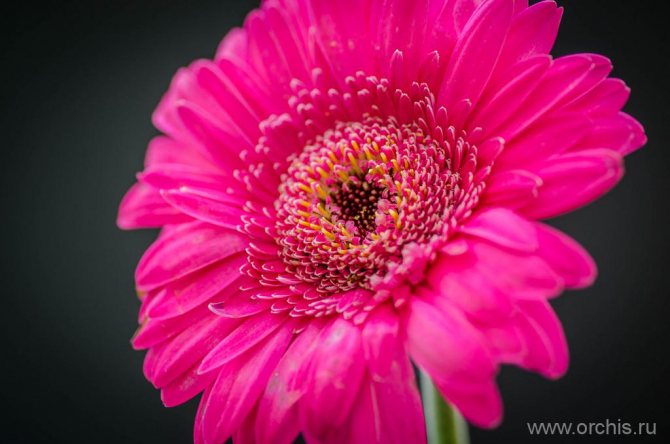

Gerbera - the plant is not only light-loving, but also thermophilic. She needs a slightly acidic soil, frequent regular watering with water at room temperature. You need to water the gerbera either along the edges of the pot, trying not to touch the rosette of the root leaves, or into the tray, where the plant will take as much water as it needs for normal growth. The plant is not afraid of drafts and loves fresh air, however, it is worth remembering that the air should not be cold and even the lightest, short-term frost can lead to the death of the plant.
During growth, plants need to do regular root and foliar feeding once every two weeks. It is extremely contraindicated to use formulations containing chlorine, horse manure, bird manure and cow manure as fertilizers. This negatively affects the growth and development of gerbera, leads to such a disease as root collar rot, which causes thinning of the roots and the subsequent death of the plant.


How to keep cut flowers in a vase longer?
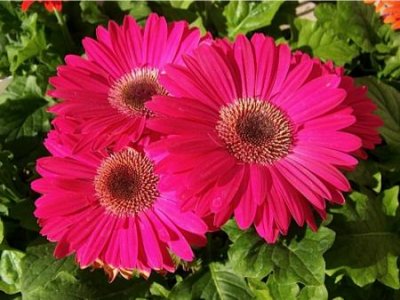

It is not easy to grow a perennial gerbera with large flowers in the garden, but keeping cut flowers for a long time is also not an easy task. In order for a cut flower to please the eye as long as possible, experienced florists recommend doing the following:
- Cut flowers 4-5 days after blooming. If you do it earlier. A fragile stem will cause rapid wilting. The peduncle is separated from the bush in the morning, breaking it out with your hands, since when cutting the bush at the cut point can rot.
- Before you put the plant in water, you need to let it settle to remove oxygen from the liquid.
- Immerse the stems in the prepared water so that only flowers remain on the surface. Keep them in this state for half an hour.
- Cut the stems from the bottom by 3-4 centimeters without taking them out of the water. The cut must be done with a sharp knife at an angle of 45%. Pruning should be done every 2-3 days.
- Flowers should be placed in tall vases to relieve the pressure of heavy flowers on the stem.
- The water in the vase should be changed regularly. Moreover, it must be free of chlorine, therefore, it must be defended and filtered before use. To neutralize chlorine impurities, add a little activated carbon or citric acid to the water.
- The addition of mineral fertilizer will also help to maintain the freshness of the flower.
- Do not place the vase in the sun or near a battery. Keep cut flowers in a cool place.
- Some secrets of growing:
- Do not deepen the root collar during transplanting - this will slow down growth.
- Plant in sterilized soil, and treat the plant with phytosporin to prevent infection.
- In wet weather, treat with foundation.
- When grown from seeds, daylight hours should be at least 16 hours. And the air temperature is 22-23 degrees. As soon as the cotyledons open, lower the temperature to 20 degrees.
- The most common mistake is overfeeding a flower - this will certainly cause a disease of the plant.
- Do not water in the evening to prevent hypothermia of the roots.
The beauty and variety of this flower can attract the most sophisticated grower. Therefore, to admire it, it is worth making so much effort. Follow all the rules of cultivation, and the garden gerbera will delight you with its flowering.
Pests and diseases dangerous for gerbera
Garden gerberas get sick from care errors. Viruses, fungal diseases and pest attacks are especially dangerous for the plant. Signs of illness:
- Powdery mildew.The leaves are covered with white mycelium.
- Gray rot. Fungal spots appear on the stem of the plant.
- Root rot. Occurs from waterlogging of the soil.
- Mosaic. The virus is transmitted by aphids.
- Whiteflies. Pests that feed on leaves and destroy the plant.
- Most gerbera pathogens are found in organic fertilizers. It is recommended to feed the flowers with mineral supplements and not water them often.
General information
Africa and the Asian tropics are considered the birthplace of this large aster. It is found in the description not only as a gerbera, but also as a transvaal daisy or chamomile.
The flower is compact. Depending on the variety, the height of the plant is from baby (25 cm) to tall (65 cm). Note the fact that a high gerbera is only at the time of its flowering. The height is due to the development of a deciduous rosette, it is located at the surface of the ground.
The stem has many layers of leaves with short stalks. Leaf shape: dissected feathers, the center of the leaf is elongated. Pointed leaves can be up to 30 cm in length. Color: dark green. Sometimes soft pubescence is found at the base of the leaf.
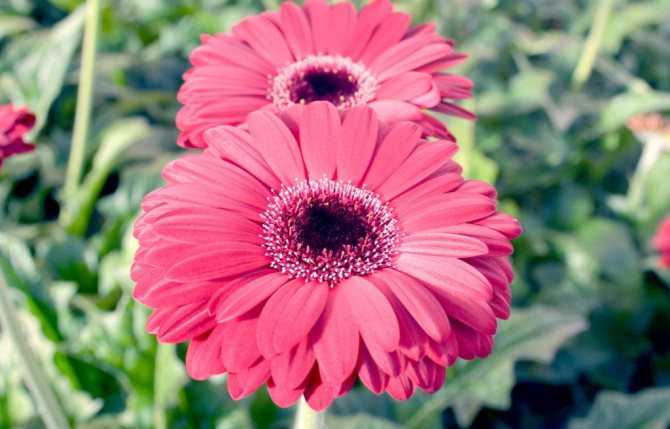

The garden gerbera blooms in August and September. The peduncle grows long, up to 80 cm, its entire surface is covered with pile. A peduncle grows from a leaf rosette. One may grow, but there may be several.
There is only one flower blooming on a peduncle. Average basket size: from 10 to 16 cm. Hybrid gerberas are found with a basket up to 25 cm. There are a lot of petals, under the weight of their gerbera it slightly tilts its head.
Description
In the center of the basket there are small tubular petals, of which a lot grows. They are always darker than the main petals. Yellowish or dark yellow centers are more common. Reed petals are located along the edges in several tiers; they are much longer than in the middle.
The colors of the petals are the most diverse: pink, red, white, crimson, orange. Gerberas bloom for a long time, almost 4 months!
Gerbera species
If the flowers are pollinated, then the seed plants ripen, and inside are dark, long seeds. With proper collection of seeds, they do not lose their germination for six months.
In nature, there are about 80 species of gerberas. Many hybrid varieties have been bred by breeders. They are grafted with many decorative qualities: the height of the plant, the size of the basket, the color of the petals, the duration of flowering.
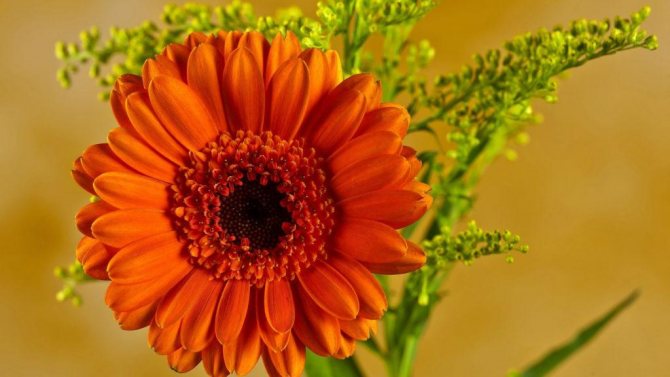

When creating hybrids, mainly two varieties of gerbera were used: Jameson and ordinary gerbera.
- Jamson's medium-sized gerbera grows with a shortened stem. It is hidden in the root leaves. The leaves are feathery, dissected, between them a pubescent peduncle grows (up to 26-35 cm). Gerbera inflorescences (5 to 16 cm) are very similar to chamomile.
- Green-leaved gerbera has long, pointed leaves, very dense. Large inflorescences with pink, ligulate petals. Peduncles can reach a meter height.
All hybrid varieties are divided into subgroups. Here are the most popular types of gerbera:
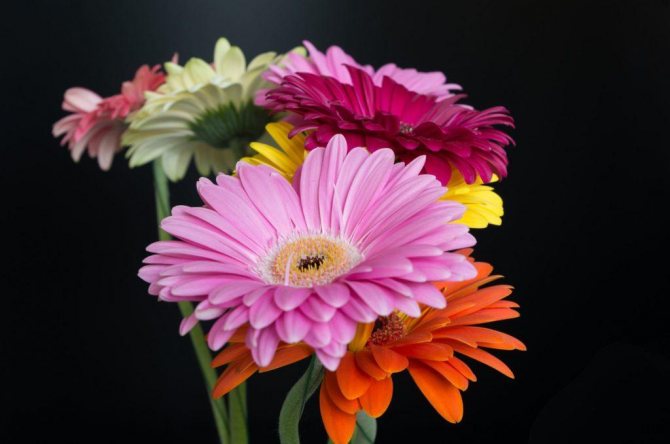

- Mars is a large basket with several tiers of wide petals. Peduncle about 60 cm. Variety of colors.
- Alkor - middle flower basket (6-8 cm), rounded petals. The leaves are narrow and long.
- The festival is a very beautiful variety. Large, pointed leaves. Peduncles are short, on them a double inflorescence with petals of medium length. Variety of colors.
- Jupiter is an interesting basket of a flower: the petals are narrow, needle-like, in several tiers. Many colors.
Gerbera does not bloom in several cases:
- When she has too much or too little light. Gerbera does not tolerate direct sunlight, they cause burns, it is recommended to move the plant to a place inaccessible to sunlight, but at the same time not devoid of light.
- The outlets may have been affected during watering.
- There may be too little space in the pot and the plant is very cramped in a narrow space.You need more freedom for the roots - you just need to transplant the gerbera into a dish slightly larger than the previous one.
- If the plant was transplanted from a small pot to a large one, then it will not bloom for a long time, adapting to new conditions.


Reproduction of culture
In addition to the seed method, gerberas are propagated as follows:
- By dividing the bush. Dig out a developed bush and shorten its roots to 15 cm. Divide it into 2-3 parts, sprinkling the cut with crushed charcoal. Protect new bushes from abundant sun for the first 2-3 weeks.
- By cuttings. Dig up a developed bush and cut off a leafy rosette with a growth zone. Sprinkle the cut with charcoal. Dig in the root in the greenhouse, securing the cuts about 5 cm above the ground. After a week, the plant will release young shoots that need to be cut off along with the roots. Plant the cuttings in loose soil under a film, provide them with warmth and high humidity.
The use of gerbera in landscape design
Gerberas are used to decorate the area around the house and grow in flower beds. In landscape design, they are combined with monochromatic plants, making up compositions of gerberas of various colors and sizes. Bright bushes are suitable for decorative design of country paths.
Garden gerberas look good in large flowerpots, which, if necessary, are taken into the house. Flower pots are placed in gazebos, near artificial reservoirs and on open summer terraces.
(
8 votes, rating: 3,75 out of 5)
← Previous post
Next post →
Flowering care
The plant blooms from June to August. It blooms after sufficient growth of the leaf rosette. The number and size of flowers depends on the illumination and air temperature.
If you want your beauty bloomed long and profusely, remove faded inflorescences. This promotes the formation of new buds. Cut dry stems as low as possible, otherwise the stumps can rot.
Read more about caring for gerberas here.
Landing technologists
Basic principles for landing:
- To grow this colorful flower in your garden, you need to reckon with the fact that the warm summer climate is more favorable. For the winter, this flower is covered with fallen leaves or straw. If you live in a cold climatic zone with harsh winters, then it is better to dig up the gerbera and transplant it into a pot. There is a high probability that the flower can freeze out in severe frosts, the covering material will not save it in this case. You can grow them as an annual flower, planting new ones every year.
- When planting, you should choose a place well-lit by the sun. This is one of the main conditions. Your plant will be able to achieve both normal growth and the beautiful blooms characteristic of the cultivar.
- They are planted in the garden in early spring. In an ordinary flower bed or garden bed. The soil should be well warmed up and with sufficient drainage to prevent root rot.
- During active growth, water the plant abundantly, but it also has a bad effect through a measured flood of water. Best of all, in moderation, so that the plant does not dry out, and there is a well-moistened soil, without stagnant water. Watering should be done without getting on the leaves and inflorescences. It is better to use water at room temperature, do not forget about fertilizing with mineral fertilizers.
Lighting
Gerbera loves bright, but diffused light. It depends on whether it will bloom and, if so, for how long.
The best place for it will be windows facing west and east. Getting in the morning and evening sunlight will come in handy.
In warmer months, the gerbera can be moved to the balcony or garden. - fresh air is beneficial.
To achieve repeated blooming of a gerbera in autumn and winter, it must be supplemented with a fluorescent lamp. It should be placed above the plant at a height of 70-80 cm. Illumination time is 12-14 hours a day.
When will they ripen and how to collect?
The seeds of the plant, after successful pollination, will be ready for harvest in a month, as soon as the middle of the flower becomes fluffy. The flower is taken apart by hand and the seeds are taken out. It is worth remembering that seeds retain good germination for only 6 months from the date of collection, during this time they need to be planted in the ground. The price depends on the amount of seed in the bag. For example, 25 pcs. - 80 rubles, and 10 pcs. - 0 to 22 to 40.
Important: When buying, look at the packing time of the seed, if it is more than 6 months, you should not buy such seeds, they have very low germination.
Fertilizer
From March to November, the gerbera needs regular mineral fertilizing - twice a month.
During the budding period and the growth of green mass - March, April, June-August - it is better to feed the plant with fertilizers with a high nitrogen content. And during flowering - with a high potassium content.
For gerbera, you can use complex fertilizers for flowering plants.
However, the concentration indicated on the package must be made 2 times less. You cannot feed a gerbera with organic fertilizers.
Feed your plants regularly with compound fertilizers
Already after the appearance of the first true leaves, the plants should be regularly fed with complex fertilizers, combining them with watering. The EC of the irrigation solution should be maintained at 0.8–1.0 millisiemens for young seedlings, followed by 1.5–2 millisiemens. The ratio of nitrogen, phosphorus and potassium in the first stages of cultivation should be N1: P1: K1, and after the buds appear, it changes towards an increase in potash fertilizers (N1: P1: K2).
It is best to compose a fertilizer system for a gerbera taking into account the quality of irrigation water and always include trace elements in the fertilizing, especially magnesium and iron chelates - gerbera is very sensitive to their lack. Plants should not be watered with clean water - only water with dissolved fertilizers! In addition, plants do not respond well to excessive watering or frequent changes in irrigation regimes.
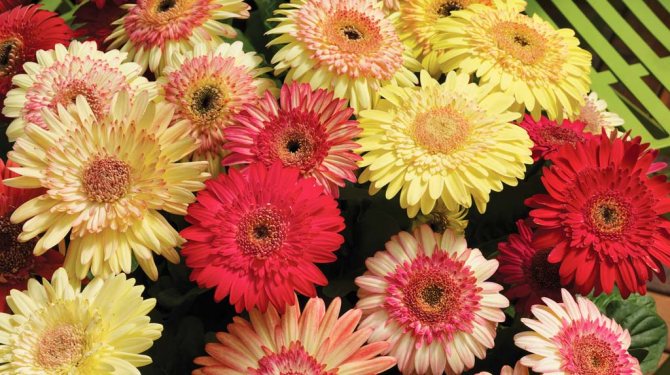

Why do the leaves of a room gerbera turn yellow and dry: what to do?
Gerbera leaves turn yellow and dry if they are affected pests:
- Whitefly... The plant should be treated with a drug with permethrin.
- Spider mite... To get rid of, spray the leaves 2-3 times a day with clean water. If it does not help, you must use the drug actellic
Important: Yellowing is observed with excessive watering. Reduce watering if your gerbera begins to wilt and turn yellow.
Planting material
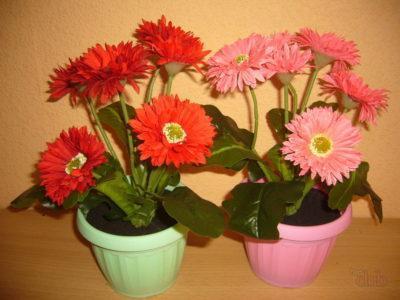

The seeds of the plant are elongated with a small brush at the tip, small in size. One gram contains 300-500 pcs.
Gerbera is not a self-pollinated plant, therefore, to obtain seeds from a flower, it is required to carry out cross, artificial pollination at the time of flowering. The pollen matures faster and is stored for up to 100 days.
It is worth remembering that in order to preserve the variety, both the male and female plant must be of the same species, otherwise you can get a plant with completely different characteristics. The result is unpredictable, the resulting seeds can give a completely different plant in terms of characteristics.
Preparation: soil and pot


First of all, when planting a gerbera, you need to prepare a pot where it will grow. Better to opt for pottery. Due to its porous structure, it allows air to pass well to the roots and will not allow them to rot.
If the pot is made of a different material, good drainage must be ensured. It is recommended to pour boiling water over the pot before planting.... This will get rid of the presence of harmful bacteria.
A slightly acidic soil is suitable for gerbera. You can cook it yourself by mixing leaf and peat soil and sand in a 2: 1: 1 ratio. You can also add a little pine bark to the mixture.
If there is no opportunity to prepare the soil yourself, you can buy a ready-made one.Best of all ready-made mixtures for gerbera is a soil for roses.
Basic landing requirements
- A garden gerbera needs warmth and moisture.
- The flower is very fond of well-lit areas.
- Gerbera garden watering prefers moderate, excessive moisture and waterlogged soil should be avoided.
Gerbera soil must contain:
- phosphorus;
- nitrogen;
- magnesium;
- potassium;
- manganese.
When preparing the soil, if possible, use forest soil that is rich in organic matter. It must be well drained, since the plant cannot tolerate even the slightest stagnation of moisture.
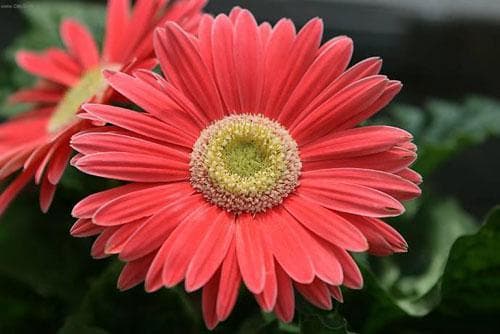

Gerbera Wright


Gerbera Jameson
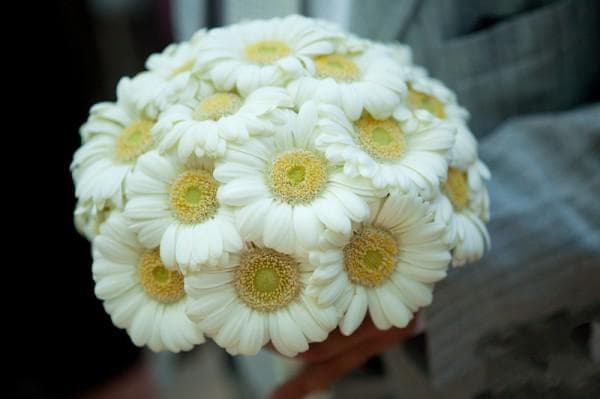

Gerbera Abyssinian
Flowering features
Gerber Jamson has an interesting feature. For a plant to bloom profusely, it needs no more than twelve hours of bright lighting per day. Therefore, it blooms from early August to mid-November, when daylight is not enough.
Remove wilted flowers from the plant during flowering as they can inhibit the development of new flower stalks. Another important nuance is that gerbera flowers are not cut, but broken. The remains of the peduncle after cutting often rot and infect the whole plant with rot.
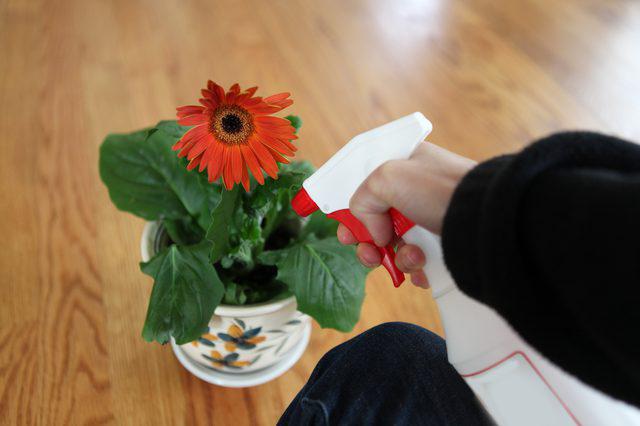

Photo
Top dressing
The lack of minerals in the soil can be replenished with the help of regular fertilizing, which are usually carried out twice a month with special formulations, which can be purchased without problems in specialized stores. With a deficiency of nutrients, the plant does not develop well, its flowers become rather small, the flowering period is noticeably reduced, and sometimes it may not come at all. Therefore, special attention should be paid to soil nutrition if you want to grow a strong and healthy plant.
Transvaal chamomile in a flower bed
Gerbera has another name, Transvaal chamomile, which belongs to the Asteraceae family. Its flowers of rare beauty are often used to create festive bouquets. The plants reach a height of 20-30 cm. Its thick leaves form a rosette, and a peduncle rises between them.
There are many varieties of gerbera. They differ:
- color;
- type of inflorescence;
- dimensions;
- terry flower.
Note: The inflorescence is a basket made up of 2 types of small flowers. In the central part there are small tubular flowers, and along the edges of the pistils there are pseudo-ligate flowers.
Features of care in a new place
In order for African chamomile to take root faster, favorable conditions are provided for it. These conditions include:
- temperature regime - 21-24 degrees,
- light mode - about 10-12 hours,
- regular and moderate watering - once every 10-14 days,
- top dressing - no earlier than 25 days.
Gerbera is quite unpretentious in care. It is very important to follow the simple rules of care after purchasing and transplanting a plant. And having provided proper care, she will thank the owners with a long and bright flowering.
Spraying
Gerbera prefers high humidity... Daily spraying with a fine spray can help create just such conditions.
Only warm water should be used for the procedure. It is important to ensure that large drops of moisture do not remain on the leaves - this can lead to decay.
To increase the humidity of the air, especially during the heating season, you can place small containers of water near the plant.
Temperature
In summer, the optimum temperature for gerbera will be 20-25 degrees. In autumn - 18-20 degrees, in winter - 14-16 degrees. A decrease in temperature in the autumn-winter period is necessary to ensure a dormant period. If this regime is observed, already at the end of February, the plant will again please with bright flowering.
If the temperature of the content is not lowered in winter, the gerbera will bloom in winter.
But, if you do not understand the temperature in winter, the gerbera will quickly deplete, and it will have to be replaced with a new specimen.
Although Transvaal chamomile loves fresh air, it is best to keep it away from drafts and cold winds. It is important to avoid sudden changes in temperature.
Popular types of gerberas
The gerbera genus includes about 80 species. Gerberas are especially fond of flower growers:
- Jamson, this species consists of many varieties of different colors;
- Wright, having white-pink marginal petals;
- Relenoliferous, with narrow-leaved inflorescences of a pale pink color;
- Abyssinian, characterized by a light inflorescence and a yellow center.
Breeders are constantly creating new varieties that differ in color, shade, the presence of stripes or patterns on the petals. Two-tone varieties look very interesting and original.
Transplants
When real leaves appear, the seedlings must be dived into a large container so that the distance between the seedlings is at least eight centimeters. After the appearance of five leaves on each plant, they are seated in separate containers with a diameter of no more than ten centimeters.
When Jamson's young gerberas grow a little more and get stronger, they are transplanted into pots with a diameter of about twenty centimeters. The plant usually begins flowering after nine months.
